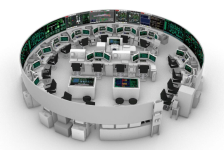OldSolduer
Army.ca Relic
- Reaction score
- 19,597
- Points
- 1,260
American Army are similar. One soldier, one job.Once upon a time, we had to cross-deck two of our RADAR techs over to a USN Frigate that was sailing in company with us on a NATO deployment. Their "SPS-49 RADAR Tech" was sent home sick so they were unable to trouble-shoot or repair a fault on it. Our guys were sent over, fixed it in an hour or two and came back. We had the SPS-49 as well, so it worked out well.
I ended up chatting with a USN "SONAR" Tech once upon a time in Puerto Rico. He was actually an AN/SQR-19 Towed Array Tech. That's all he fixed.
As a RCN SONAR Tech (NET(A)) I was responsible for fixing:
- Hull Mounted SONAR
- Towed Array SONAR
- Sonobouy System
- OPS room Displays
- CCS Computers, Data Bus, etc
- Gyro Compass
- Nav Distribution System
- Speed Log
- Echo Sounder
- Bathythermograph
- Compass Repeaters
- SHINNADS (Digital Nav System)
- etc...
He was responsible for a single one of those systems - and there was no redundancy if he was sick/etc. Their Technical department was larger than ours, but each tech fixed one thing.
Our NET(A) Department had 5 techs (we were overborne by 1) but all of us had skill/experience with the above systems and were capable of fixing most anything that came up.
That said, this was under the NET/NWT construct - I spent over 32 months in the Training System between my QL3 and my QL5 courses. That same training is practically halved in the interests of getting maintainers out to the fleet faster, and there is a much greater emphasis on training in-situ while on ships in the fleet with the W Eng Tech program.
As a result, there is much less knowledgebase, and after 14 years of W Eng Tech, the number of former NET/NWTs is tiny, and I suspect the Navy has discovered that there is a linkage between training technicians versus training maintainers.
Not much versatility.






